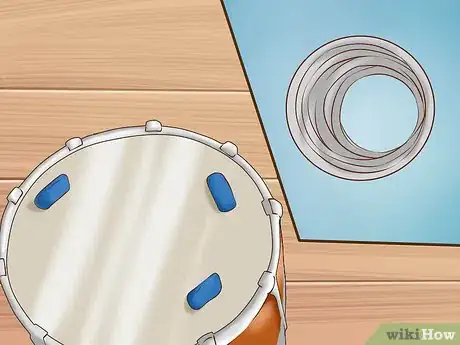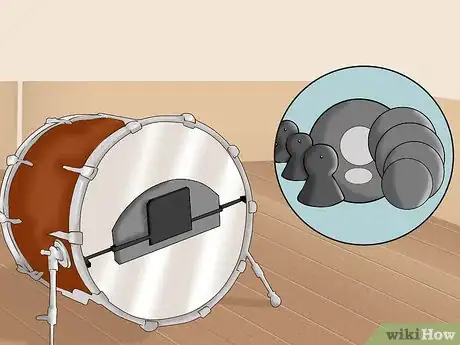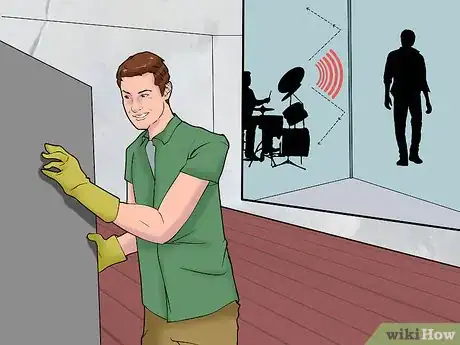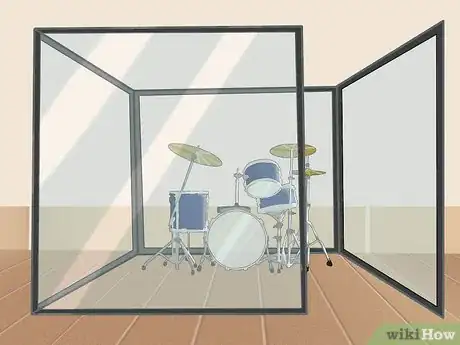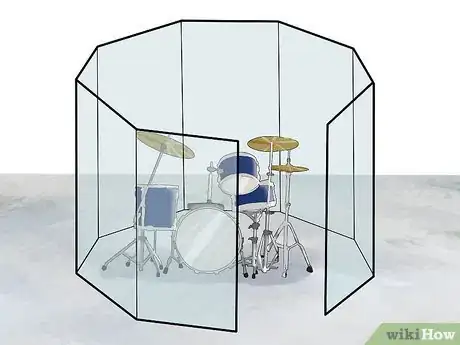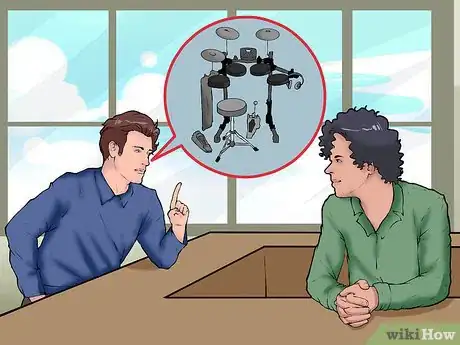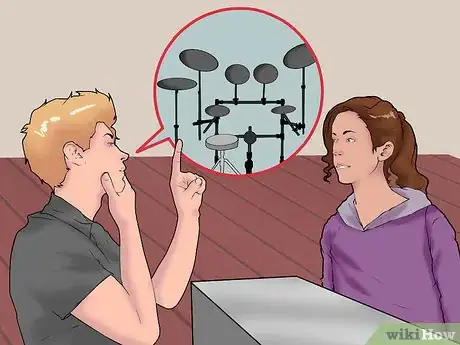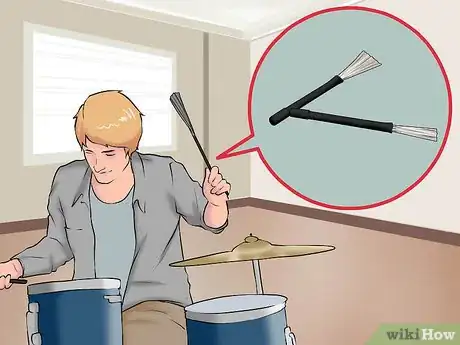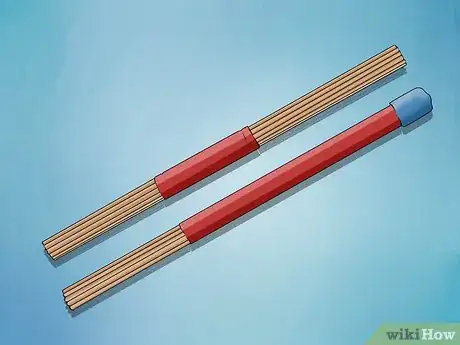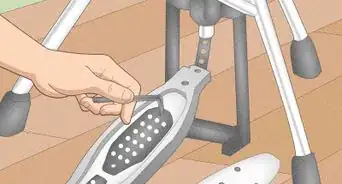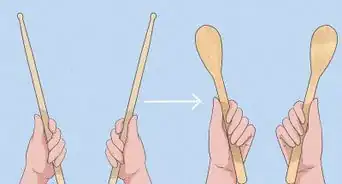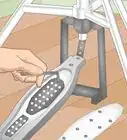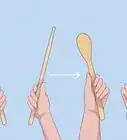This article was co-authored by wikiHow Staff. Our trained team of editors and researchers validate articles for accuracy and comprehensiveness. wikiHow's Content Management Team carefully monitors the work from our editorial staff to ensure that each article is backed by trusted research and meets our high quality standards.
There are 8 references cited in this article, which can be found at the bottom of the page.
This article has been viewed 156,306 times.
Learn more...
The drum set is one of the loudest musical instruments available. Unlike many electric instruments (such as the electric guitar), it cannot be muted with the use of headphones or through un-amplified play. Learning how to make a drum set quieter is an essential process when playing a drum set in a shared house or apartment complex. There are several methods of doing this, ranging in expense, effort required, and effectiveness. Use these methods in conjunction with one another, or on their own.
Steps
Muting the Drum Set Physically
-
1Fill the bass drum with a pillow. Remove one of the bass drum heads and place a soft material such as a pillow or blanket inside the drum. The material must slightly touch both heads in order to achieve a muted sound. Once you've replaced the head you removed, re-tune the drum. The pillow will deaden many of the bass drum's overtones, resulting in a quieter, more muffled sound.
- Music stores also sell specially designed muting pillows for bass drums. These pillows come in a variety of weights and sizes, allowing you to adjust the level of deadening in the drum.[1]
-
2Mute with plastic O-rings. Tom and snare drums can be deadened using plastic O-rings. These rings are placed along the top of the drums and help absorb some of the vibrations created when a drum is struck. As a result, the sound created by these drums will ring less, offering a more manageable sound.
- Drum gel may also be used in a similar fashion to O-rings. These are small adhesive gel packs that can be placed on the toms and snare to mute the drum.
- Other DIY options for muting the snare and toms include covering portions of the drum with fabric such as an old shirt, heavy duty tape (such as duct), or gum![2]
Advertisement -
3Use mute pads. Mute pads are placed entirely over the top of the drums (or cymbals) and almost completely deaden the sound of the drums. This makes mute pads ideal for perfecting hand technique or rhythm, but not a great choice when you need to actually hear how the drum will sound.
- Using mute pads also alters the rebound of the drum, causing your drumming to feel different.[3]
Soundproofing Your Room
-
1Install sound insulation. Acoustic panels or drywall padding can make the sound produced by drums far less likely to bleed through the room that houses the kit. However, sound insulation is expensive, and often requires a fair amount of work and restructuring of the room itself.[4]
- Cheaper options for soundproofing your room include sound absorbing strips that can be placed along the ceiling, the bottom of doors, and walls.
- If you can't afford acoustic foam, hang blankets or quilts on your walls. The fabric may not be ideal, but will help absorb the sound.
-
2Construct a room specifically for playing drums. Further sound insulation to a room requires more exhaustive changes to the structure of the room, such as decoupling the sheetrock from the wall framing. Contact a carpenter (and your landlord) if you plan on making such changes.
- Make sure the doors and windows are sealed properly to keep sound from escaping.
- Sound-isolated rooms built correctly are airtight, so ventilation is a must for such rooms. Makes sure you look for a ventilation system that doesn’t compromise your sound isolation.
-
3Set a drum screen around your kit. Drum screens, also called drum shields, redirect the sounds created by drums. The hinged plastic sheets can be angled to direct the sound exactly where you desire, such as away from your parents' bedroom. Drum screens are useful for practice, but note that the overall sound produced will be different than an open drum.
- Remember that these screens redirect sound – often reverberating right back into your ears. Invest in some ear buds to save your hearing when using a shield.
- Try coupling the shield with any sound absorbing material you’ve placed in your room. Aim the shield so that the sound is redirected into the material.[5]
Using Accessories for Lower Volume
-
1Purchase an electronic drum kit. These sets can easily be equipped with headphones to allow the player to hear the drums while keeping overall noise to a minimum. This is a great option if you don’t mind trading sound quality for convenience.
- Electric drum sets often come with additional features that make them a worthy choice, even if you already have an acoustic drum set, such as the ability to easily record your music.
- Electronic drum sets also feature volume controls, allowing you to play them at a low volume, even without headphones.
-
2Purchase a practice drum pad kit. Practice drum pads are made of a rubber material and can be arranged in a fashion that resembles a full drum kit, bass drum included. Unlike an electronic drum kit, the practice drum pad is not capable of sound resembling a normal drum kit. However, the rubber construction allows drum sticks to rebound in a fashion very much like an actual drum set.
- Drum pads are great if you have very little room to spare, but still wish to practice your hand technique. Set one up on a cymbal stand to practice, and buy a full kit when you have the room to spare.[6]
-
3Use drum brushes. Drum brushes are drum sticks with heads consisting of nylon filaments. They are used for softer playing, as well as with certain drumming techniques. Note that these will have no effect on the volume of your bass drum.
- Drum brushes don’t work particularly well on closed hi-hats, so plan your practice session ahead.[7]
-
4Pick up some bundle sticks. Bundle sticks are similar to drum brushes, but made of wood or a similar harder material. They produce a louder sound than drum brushes, while retaining the feel and sound of standard drumsticks.
- If bundle sticks are too loud, try coupling them with a mesh drum cover or other deadening method.[8]
Things You'll Need
- Drum set
- Pillow
- Drum and cymbal mutes
- Plastic O-rings
- Drum gel pads
- Drum screen
- Mute pads
- Sound insulation
- Electronic drum kit
- Drumtee mutes
References
- ↑ http://www.freedrumlessons.com/articles/drum-muffling.php
- ↑ http://www.tbrucewittet.com/2012/07/t-bruces-free-drum-lesson-no-4-muffle-with-chewing-gum-after-youve-chewed-it-its-cheaper-than-moon-gel/
- ↑ https://www.drumeo.com/blog/how-to-practice-without-driving-the-neighbors-crazy/
- ↑ http://www.hometips.com/diy-how-to/soundproofing-insulation-walls-ceilings.html
- ↑ http://www.kungpowpro.com/12-ways-to-control-drum-volume-on-stage/
- ↑ http://resource.takelessons.com/the-pros-and-cons-of-using-a-practice-pad/
- ↑ http://www.rockdrummingsystem.com/underground/drum-lessons/brushes.php
- ↑ http://www.stickandstrum.com/make-drums-quieter.html

